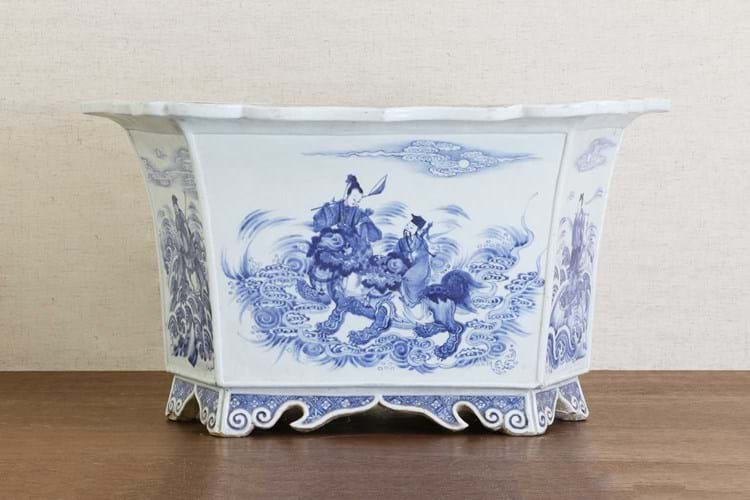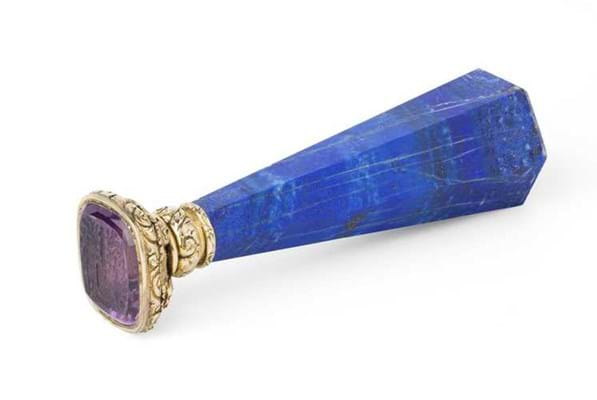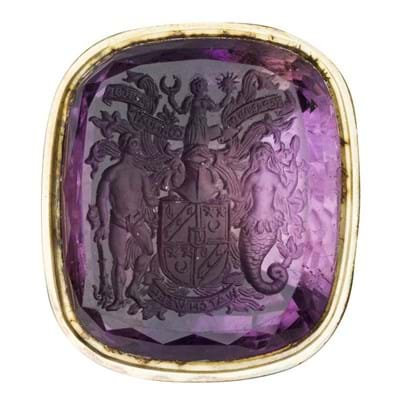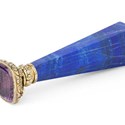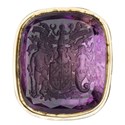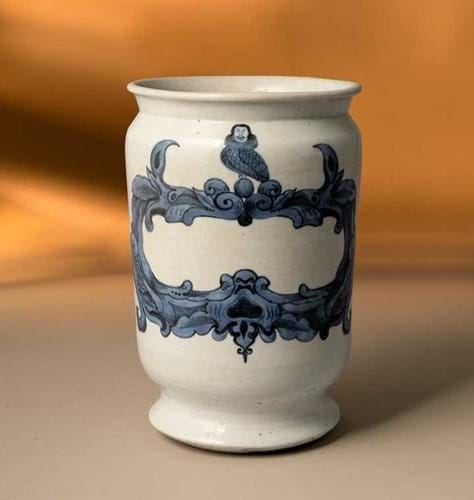1. Chinese jardinière
This Qing hexagonal form blue and white jardinière, the highlight of a Sworders’ sale in Stansted Mountfitchet on May 19, is a type that was used to grow flowers or bonsai at the Qing court.
Measuring almost 2ft (60cm) across, it is finely painted with scenes of the Eight Daoist Immortals and has a Kangxi (1662-1720) mark to the rim. It was thought to be of the period rather than a later copy. Similar examples with the same distinctive scrolling feet are in the collection of the Forbidden City in Beijing. Others panted in wucai colours are known.
The vendor’s ancestors had worked as missionaries in China in the late 19th century and some items had been bought back to the UK. However, this piece may also have been collected more recently by parents who worked for Sotheby’s in the 1950s and 60s. It was used regularly in the family home for its original purpose, as a vessel for growing plants.
It was estimated at a modest £300-500 but sold way above expectations for £97,000 (plus 25% premium) to a buyer in China bidding on the phone.
2. Sir Walter Scott seal
A private collection of seals, offered by Lyon & Turnbull in Edinburgh on May 12, was led by this handsome Regency example fashioned in lapis lazuli, amethyst and gold for Sir Walter Scott (1771-1832) of Abbotsford. By 1820 Scott was very much part of the Scottish gentry with this seal used for letters to the great and the good, including the correspondence that led to George IV’s famous visit to Scotland in 1824. It was guided at £12,000-15,000 and go away at £11,000.
3. Arita porcelain drug jar
The first recorded order for Arita porcelain by the Dutch East India Company (VOC) is dated 1653. In addition to more exotic decorative wares, it included ‘various (small) porcelain bottles, (small) pots, salve and preserve pots for the surgeon’s shop in Batavia, made according to the samples sent’. Other similar orders for utilitarian wares were passed for ‘large and small medicine pots’ to be shipped to Taiwan.
The rare jar offered by Woolley & Wallis in Salisbury on May 24 was possibly made as part of one of these orders. Although outwardly similar to the tin glazed earthenware dry drug jars or albarello made in many European countries in the 17th century, it is made in a heavily potted porcelain. The underglaze blue ‘label’ with a narrow blank cartouche for writing the contents, is also embellished with a curious moustached male harpy wearing a neck ruff while perched on an orb. Its inspiration may be may have been an armorial used by the monastery or apothecary that provided a sample to copy.
Similar vessels are known – another blue and white jar is in the Ashmolean Museum’s Japanese export porcelain collection – but this piece is an unrecorded and possibly unique example.
Offered for sale at £5000-8000, it raced away to bring £54,000, the top-selling Japanese lot of the recent series of Asian art sales.
4. Musical ‘captain’s desk’ davenport
A musical ‘captain’s desk’ davenport sold for £9500 as part of Tennants’ Scientific and Musical Instruments sale in Leyburn, North Yorkshire, on May 17. At first glance this piece, which was made c.1875-80, appears to be just a good quality burr-walnut davenport of the type with a rising stationary compartment. However, concealed within, is a Swiss musical box.
This rare piece, at the intersection of furniture making and mechanical musical instrument, combines the talents of three different firms. The London furniture maker Edwards and Roberts provided the casework. The mandolin cylinder musical box was made by AB Bremond, a Geneva musical box maker whose main body of work dates to the mid to late 19th century, while the clever side mechanism for changing the cylinders bears the mark of Blumberg and Co., a London based cabinet maker last documented in 1871. Very few such pieces have ever appeared on the open market.
As a rule, Victorian davenports have dipped in popularity from the days when a really good example might bring £3000-5000. However, this rare iteration, of particular interest to mechanical musical collectors, improved on its £0000-0000 guide to take £9500.
5. 'Soldiers' picture
This 2ft 10in x 3ft 6in (81cm x 1.05m) oil on canvas signed by Georges Paul Leroux (1877-1957) that came for sale at Bellmans in Billingshurst on May 16 was purchased by the owner in a brocante in Saint-Valery-sur-Somme, France around 20 years ago.
It is the subject matter of marching French soldiers that makes it of particular interest. Leroux, a frequent exhibitor at the Salon des Artistes Francaise before and after the First World War, served in the army and sketched the action he saw on the Western Front. His most famous work L'Enfer (Hell), completed in 1921 is in the collection of The Imperial War Museum.
Soldiers, thought to date from the same period, was guided at £5000-8000 and sold at £6500.


